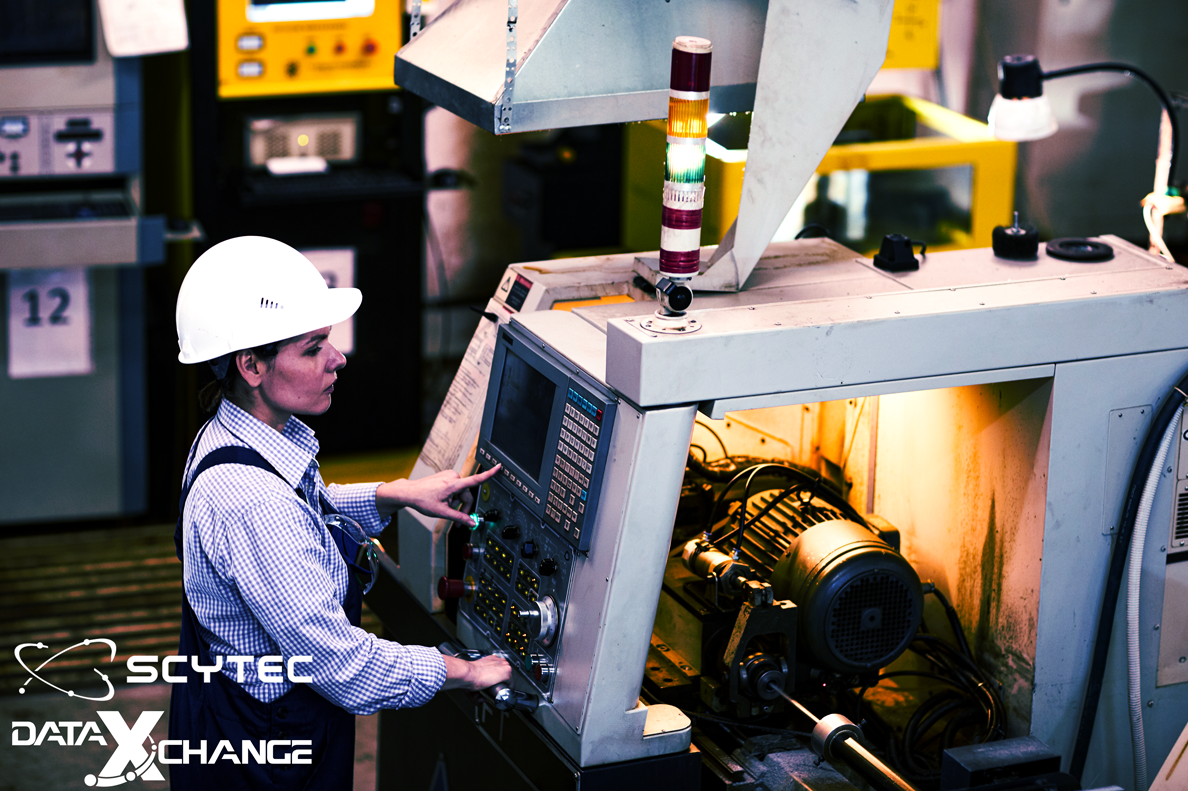Utilization and Efficiency and How Both Fit into Different Production Environments
In the world of modern manufacturing, machine monitoring has become an essential tool for companies looking to increase productivity, improve processes, reduce costs and the economic impact of lulls in the industry. While most are familiar with manufacturing terms like OEE, the two key metrics that are often used to measure the performance of CNC machines and other shop floor equipment are utilization and efficiency. While these terms are often used interchangeably, they are two distinct measures that provide different insights into shop floor equipment performance and have an impact in differing production output environments. In the following commentary, we will discuss the differences between these two concepts and how they impact high and low volume manufacturing production facilities, and where a machine monitoring software platform like Scytec DataXchange can fit in.
First, let us discuss the actual definition of utilization in modern manufacturing. Utilization refers to the amount of time that a machine is in use compared to the total amount of time that it is available for use. This metric is often expressed as a percentage, with a higher percentage indicating that the machine is being used more frequently. For example, if a machine is available for use for 8 hours a day and is used for 6 hours a day, its utilization rate would be 75%.
In high volume, low mix production, utilization can be less important because machines may be running continuously for extended periods of time. In these environments, maximizing utilization can lead to increased wear and tear on machines and higher maintenance costs, which can offset any gains from increased production. Instead, manufacturers may focus more on other metrics, such as efficiency, to ensure that their machines are performing at optimal levels.
Efficiency, on the other hand, refers to the ratio of output produced by a machine to the amount of input required to produce that output. This metric is often expressed as a percentage as well, with a higher percentage indicating that the machine is producing more output with less input. For example, if a machine produces 100 units per hour and requires 10 units of input per hour, its efficiency rate would be 90%.
In low volume, high mix production, efficiency may be less critical because the focus is often on producing a small number of highly specialized products rather than maximizing output. However, even in these environments, manufacturers may still look for ways to improve efficiency to reduce costs and increase profitability.
A machine that is being used frequently may have a high utilization rate, but if it is not producing output efficiently, it may be costing the company more than it is producing. For example, a machine that is running at full capacity but producing defective parts may have a high utilization rate, but its efficiency rate would be low. In contrast, a machine that is not being used as frequently but produces high-quality output efficiently may be more valuable to the company in terms of overall productivity.
Scytec DataXchange was designed with these principles in mind to cater to all ends of the manufacturing spectrum. When it comes to machine monitoring, both utilization, and efficiency are important metrics to track. By monitoring shop floor equipment utilization, manufacturers can ensure that their machines are being used as often as possible to maximize productivity. When manufacturers utilize a tool like Scytec DataXchange for monitoring their machine efficiency, they can identify areas where improvements can be made to reduce waste such as scrap parts, and increase throughput.
In conclusion, while utilization and efficiency are often used interchangeably in the world of modern manufacturing, they are two distinct metrics that provide different insights into machine performance. Both metrics are important for optimizing production processes and minimizing downtime, but they serve different purposes and require different approaches. By working without a machine monitoring platform to improve both utilization and efficiency, manufacturers can make informed decisions about how to improve their production processes and maximize their return on investment.


